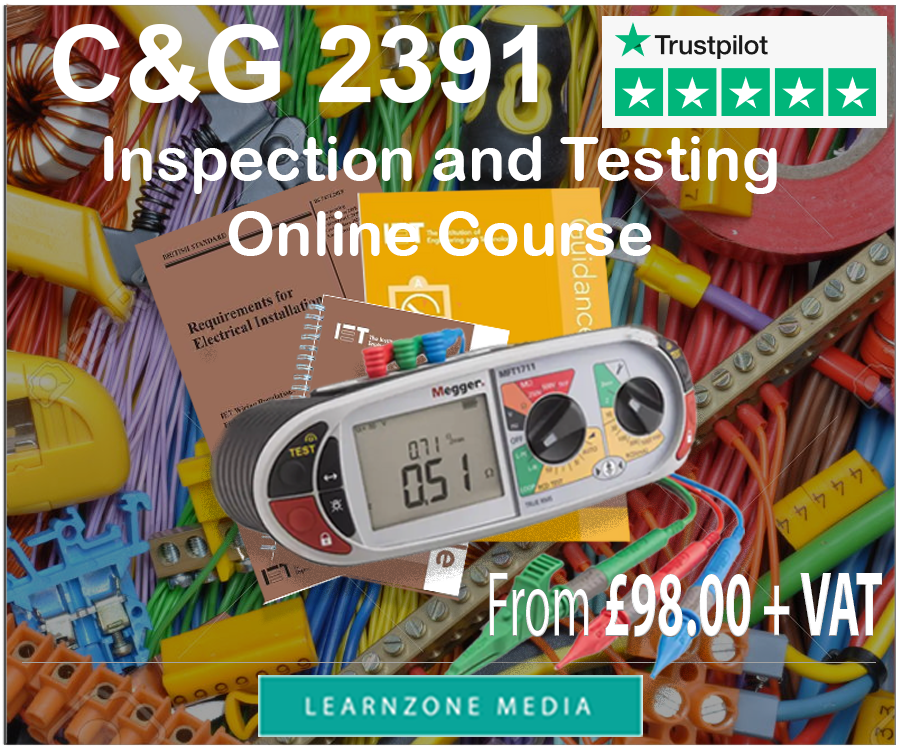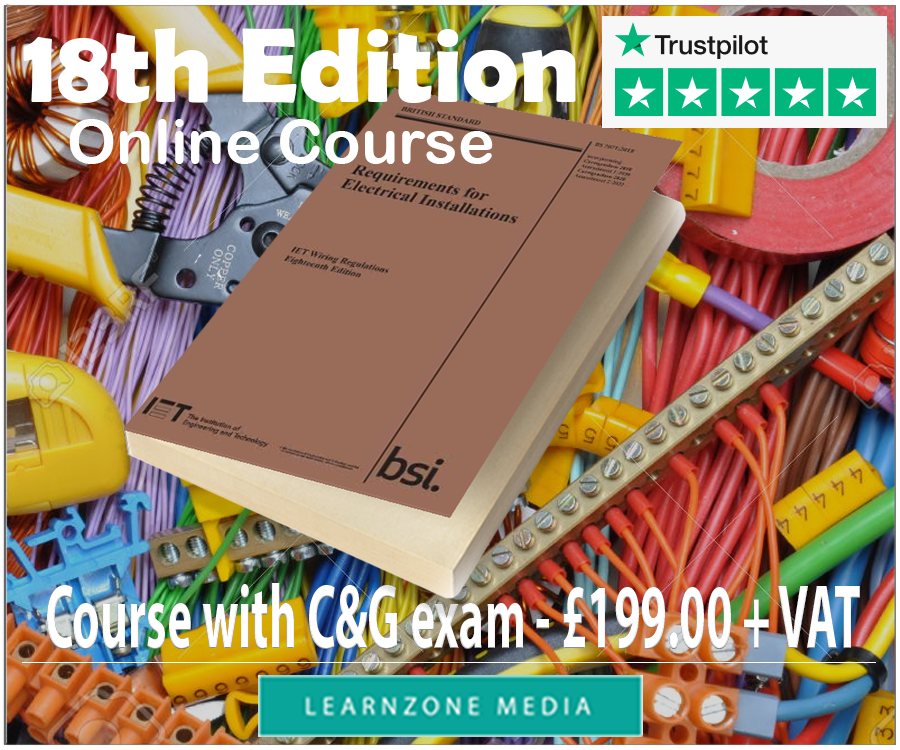C&G 2365 - 203 Electrical Installations Technology Practice Questions with Answers
16. The specific term for the conductor used to connect exposed conductive parts, in a bathroom, to earth is:
a) Equipotential bonding conductors
b) Supplementary bonding conductors
c) Circuit protective conductors
d) Earthing conductors
17. You have a small amount of left-over cable and there is a small open fire on-site, you may:
a) Burn the cable as long as they are the fireproof type
b) Not dispose of it in the fire
c) Remove the copper and burn the insulation only
d) Remove the copper and melt the copper only
18. What is meant by the efficacy of a light source
a) The ability to control the light output
b) The efficiency of the lamp
c) The amount of light produced as a ratio of the energy consumed
d) The degree of its rejection of common-mode signals in preference to differential signals
19. An example of an exposed conductive part would be
a) A radiator in a bathroom
b) The casing of a metal distribution board
c) A gas service pipe
d) Kitchen sink
20. When commissioning a house installation, which of these are in the correct order and also tests carried out before energising the supply (dead tests):
a) Continuity, Ring, Impedance of earth loop
b) Ring final, Protection, Devices
c) Insulation, Polarity, Loop
d) Bonding continuity, Continuity of ring final, Insulation resistance
21. What classification of fuse is re-wirable:
a) BS88
b) BS 1362
c) BS EN60898
d) BS3036
22. An RCBO is a device which is used only as:
a) A Voltage Reduction Sensor
b) An Overload Protection Device
c) Overcurrent And Earth Leakage Protection
d) A Short Circuit Protection Device
23. The maximum earth fault loop impedance, permitted by BS 7671, on a TN system for a ring final circuit protected by a 30 A BS 1361 fuse is:
a) 1.14Ω
b) 1.15Ω
c) 1.92Ω
d) 1.09Ω
24. The type of fault which occurs when a phase conductor comes in contact with a neutral conductor is called:
a) An Earth Loop Fault
b) A Short Circuit Fault
c) A Catastrophic Fault
d) An Overload Fault
25. BS 7671 537.1.4 States: 'A Main linked switch or linked circuit breaker shall be provided as near as practicable:
a) Close together
b) In inaccessible positions
c) Near to the load centres
d) Near to the supply intake
26. What supply system uses one conductor throughout as a neutral and earth (PEN):
a) TT
b) TNS
c) IT
d) TNC
27. An item of equipment has a rating of IP1X, what does the 1 refer to:
a) Protection against solid object penetration
b) Protection against sun light penetration
c) Protection against gas penetration
d) Protection against water penetration
28. A circuit that feeds a shower is called a
a) Radial Circuit
b) Environment Circuit
c) Heating Circuit
d) General Circuit
29. What supply system uses no earth, or a high impedance to earth:
a) TT
b) TNS
c) IT
d) TNC
30. The main purpose of equipotential bonding is to:
a) Maintain adjacent metalwork at the same electrical potential
b) Improve earth loop impedance
c) Increase impedance of earth return
d) Avoid mechanical damage
31. The main purpose of earthing an electrical installation is to
a) Link all extraneous conductive parts together
b) Link all exposed conductive parts together
c) Provide a low resistance path to the main earth terminal for all exposed parts
d) Provide a high resistance path to the main earth terminal for all exposed parts
32. BS 88 fuses are used for protection of motor circuits because they can:
a) Discriminate between overload and starting current
b) Can withstand high current overloads for a long time
c) Will disconnect the circuit quickly if a very small overload occurs
d) Is cheaper than other fuses
33. A method of calculating Zs is by the formula:
a) Zs = R1 + R2 + R3
b) Zs = Ze + R1 + R2
c) Zs =Ze + R1 + R3
d) Zs = Ze + R2 + R3
34. What does a Residual Current Device (RCD) offer protection against?
a) An overload current
b) A short circuit current
c) The nominal current
d) An earth fault current
35. With a TN-C-S three-phase and neutral supply an isolator must:
a) break all phases
b) break all phases and neutral
c) break the neutral only
d) break the phase, neutral and earth conductors
36. H.R.C fuses can distinguish between:
a) short circuit and starting currents
b) high starting currents and short duration overload
c) high fault currents and short term overloads
d) starting currents and overloads
37. In a TN-S supply system, the earthing conductor is connected between the main earthing terminal and:
a) the supply neutral
b) the earth electrode
c) the common earth terminal
d) the supply cable sheath






